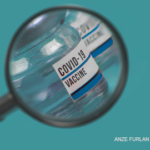That still leaves 18%—59 million Americans—who have no interest in the vaccine. Who are these people, and can their minds be changed?
Trekkies & Trekkers
First, a lesson on nomenclature: anti-vaxxer is to vaccine hesitant as trekkie is to trekker. Both sets of terms refer to roughly similar groups of people, but there is nuance. The anti-vaxxers are the true believers; they will not be swayed by mere PowerPoint presentations. They will match you, slide for slide, with offbeat interpretations of questionable studies and nonsensical assertions of individual freedoms. They are like those who refuse to acknowledge the brilliance of Ricardo Montalbán’s performance in Star Trek II: Wrath of Khan. They are beyond hope or reason.
The vaccine hesitant comprise the reasonable reverse of the same coin. They do not doubt the science supporting the use of vaccines. They know that vaccines save lives. They’re just afraid. Or indifferent.16
The vaccine hesitant largely fall into three categories. The first is the hale and hearty, who largely think of COVID-19 as a problem for other people. They may even have friends who, also young and healthy, may have tested positive without ever having realized they were ill, which reinforces their viewpoint. The second category is ethnic minorities, who may not interact with the healthcare system on a regular basis or may bear some suspicion of organized healthcare, in general. The third category is the hyperinformed, the patients who show up to appointments with their Google searches and preprints, asking endless questions that have no good answer.
Sound like anyone you know?
I haven’t yet had many of these difficult conversations, but I know they are coming. And we should acknowledge they have a point. The history of vaccine rollouts has not been without tragedy. The worst example was the 1955 Cutter Incident, in which a manufacturing error allowed live polio to be mixed with the inactivated vaccine.17 The flawed vaccine sickened 40,000 children; 51 of these children were paralyzed, and five died. Even then, the company was not found to be negligent; a jury found it did the best it could with a novel, complex manufacturing process.
To reach the vaccine hesitant, we need to address their concerns head-on. For the unworried well, we need to convince them that getting vaccinated is an act of altruism, somewhere between running into a burning building and helping a little old lady cross the street. It is the young and healthy who are most likely to have an asymptomatic or minimally symptomatic infection, which they can unknowingly transmit to others. They may not benefit directly from the vaccine, but vaccination may prevent them from inadvertently infecting someone they love.



